Review and Future Perspective of Geophysical Methods Applied in Nearshore Site Characterization
Abstract
:1. Introduction
2. Geophysical Survey Methods and Engineering Survey Objectives
2.1. Geophysical Survey Methods
2.2. Purpose of Engineering Surveying in Nearshore
2.3. Applications of Geophysical Survey Methods
3. Common Geophysical Methods for Nearshore Site Characterization
3.1. Seismic Survey Methods Related to Changes in Physical Quantities
3.1.1. Side-Scan Sonar
3.1.2. Single- and Multi-Beam Sonar
3.1.3. Sub-Bottom Profiler
- Pingers: single frequency, generally between 3.5–15 kHz; can survey a seabed up to 50 m deep; resolution of about 0.3 m;
- CHIRP: Uses a wide range of frequencies, generally between 3–40 kHz; can survey a seabed up to 50 m deep; resolution of about 0.3 m;
- Boomer: Frequency generally between 500 Hz and 5 kHz; can survey a seabed up to 30–100 m deep; resolution between 0.3–1 m;
- Sparkers: Frequency generally between 0.05–4 kHz; can survey a seabed up to 1000 m deep; resolution between 0.3–3 m.
3.1.4. Marine Seismic Reflection Method
3.2. Underwater Magnetometer
3.3. Challenges in the Application of Common Shallow Water Geophysical Methods
3.3.1. Difficulties in Surveying Very Shallow Waters (Water Depth < 5 m)
3.3.2. Limited Information Acquired below the Seafloor
3.3.3. Inability to Obtain Material Properties of the Seabed
4. Quantitative Geophysical Methods for Shallow Waters
4.1. Underwater Seismic Refraction Method (USRM)
4.2. Underwater Seismic Surface Wave Method (USSWM)
4.3. Underwater Electrical Resistivity Tomography (UERT)
4.4. Challenges in the Application of Quantitative Geophysical Methods for Nearshore Site Characterization and Future Development Directions
5. Conclusions
Author Contributions
Funding
Institutional Review Board Statement
Informed Consent Statement
Data Availability Statement
Acknowledgments
Conflicts of Interest
References
- International Society for Soil Mechanics and Geotechnical Engineering (ISSMGE). Geotechnical and Geophysical Investigations for Offshore and Nearshore Developments; International Society for Soil Mechanics and Geotechnical Engineering: London, UK, 2005. [Google Scholar]
- Liu, Y.; Zhang, Y.F.; Yi, H. The New Magnetic Survey Method for Underwater Pipeline Detection. Appl. Mech. Mater. 2012, 239–240, 338–343. [Google Scholar] [CrossRef]
- Pater, C. Seabed infrastructure projects, underwater cultural heritage and the environmental assessment process: The UK example. In The Archaeology of Europe’s Drowned Landscapes. Coastal Research Library; Bailey, G., Galanidou, N., Peeters, H., Jöns, H., Mennenga, M., Eds.; Springer: Cham, Switzerland, 2020; Volume 35, pp. 509–520. [Google Scholar] [CrossRef] [Green Version]
- Lu, B.; Liang, Y. Statistical correlation of physical parameters with sound velocity in marine sediments of South and East China Sea. Sci. China 1995, 38, 613–618. [Google Scholar]
- Gaiser, J.E. Multicomponent Vp/Vs correlation analysis. Geophysics 1996, 61, 1137–1149. [Google Scholar] [CrossRef]
- Ayres, A.; Theilen, F. Relationship between P- and S-wave velocities and geological properties of near-surface sediments of the continental slope of the Barents Sea. Geophys. Prospect. 1999, 47, 431–441. [Google Scholar] [CrossRef]
- Archie, G.E. Electrical-Resistivity Log as an Aid in Determining Some Reservoir Characteristics. Trans. Am. Inst. Min. Metall. Eng. 1942, 146, 54–62. [Google Scholar] [CrossRef]
- Biella, G.; Lozej, A.; Tabacco, I. Experimental study of some hydrogeophysical properties of unconsolidated porous media. Ground Water 1983, 21, 741–751. [Google Scholar] [CrossRef]
- Klein, K.A.; Santamarina, J.C. Electrical Conductivity in Soils: Underlying Phenomena. J. Environ. Eng. Geophys. 2003, 8, 263–273. [Google Scholar] [CrossRef]
- Urish, D. Electrical resistivity-hydraulic conductivity relationships in glacial outwash aquifers. Water Resour. Res. 1981, 17, 1401–1408. [Google Scholar] [CrossRef]
- Punzo, M.; Cavuoto, G.; Tarallo, D.; Fiore, V.D. Ensuring very shallow-water sediment properties: Case study from Capo Granitola harbour, Sicily (Italy). Mar. Geophys. Res. 2017, 38, 313–323. [Google Scholar] [CrossRef]
- Caiti, A.; Akal, T.; Stoll, R.D. Determination of shear velocity profiles by inversion of interface wave data. In Shear Waves in Marine Sediments; Hovem, J.M., Richardson, M.D., Stoll, R.D., Eds.; Kluwer Academic Press: Dordrecht, The Netherlands, 1991; pp. 557–566. [Google Scholar] [CrossRef]
- Park, C.B.; Miller, R.D.; Xia, J.; Ivanov, J.; Hunter, J.A.; Good, R.L.; Burns, R.A. Multichannel analysis of underwater surface waves near Vancouver, B.C., Canada. In 70th Annual Meeting, Society of Exploration Geophysics (SEG), Extended Abstracts; Society of Exploration Geophysics: Houston, TX, USA, 2000; pp. 1303–1306. [Google Scholar] [CrossRef] [Green Version]
- Ritzwoller, M.H.; Levshin, A.L. Estimating shallow shear velocities with marine multicomponent data. Geophysics 2002, 67, 1991–2004. [Google Scholar] [CrossRef]
- Bohlen, T.; Kugler, S.; Klein, G.; Theilen, F. Case history: 1.5D inversion of lateral variation of Scholte-wave dispersion. Geophysics 2004, 69, 330–344. [Google Scholar] [CrossRef]
- Puech, A.; Rivoallan, X.; Cherel, L. The Use of Surface Waves in the Characterisation of Seabed Sediments: Development of a MASW System for Offshore Applications. In Caractérisation In Situ Des Fonds Marins; SEATECH WEEK: Brest, France, 2004. [Google Scholar]
- Shtivelman, V. Estimating seismic wave velocities below the sea bed using surface waves. Near Surf. Geophys. 2004, 2, 241–247. [Google Scholar] [CrossRef]
- Park, C.B.; Miller, R.D.; Xia, J.; Ivanov, J.; Sonnichsen, G.V.; Hunter, J.A.; Good, R.L.; Burns, R.A.; Christian, H. Underwater MASW to evaluate stiffness of water-bottom sediments. Lead. Edge 2005, 24, 724–728. [Google Scholar] [CrossRef]
- Kaufmann, R.D.; Xia, J.; Benson, R.C.; Yuhr, L.B.; Casto, D.W.; Park, C.B. Evaluation of MASW data acquired with a hydrophone streamer in a shallow marine environment. J. Environ. Eng. Geophys. 2005, 10, 87–98. [Google Scholar] [CrossRef]
- Hunter, J.A.; Burns, R.A.; Good, R.L.; Pullan, S.E.; Pugin, A.; Crow, H. Near-surface geophysical techniques for geohazards investigations: Some Canadian examples. Lead. Edge 2010, 29, 964–977. [Google Scholar] [CrossRef]
- Boiero, D.; Wiarda, E.; Vermeer, P. Surface- and guided-wave inversion for near-surface modeling in land and shallow marine seismic data. Lead. Edge 2013, 32, 638–646. [Google Scholar] [CrossRef]
- Paoletti, L.; Mouton, E.; Liposcak, I. Comparison of underwater MASW, seismic CPT and downhole methods offshore Croatia. In Proceedings of the 4th International Conference on Geotechnical and Geophysical Site Characterisation (ISC’4), Recife, Brazil, 17–21 September 2013; Coutinho, R.Q., Mayne, P.W., Eds.; pp. 1457–1462. [Google Scholar]
- Long, M.; Trafford, A.; McGrath, T.; O’Connor, P. Multichannel analysis of surface waves (MASW) for offshore geotechnical investigations. Eng. Geol. 2020, 272, 105649. [Google Scholar] [CrossRef]
- Johansen, T.A.; Ruud, B.O. Characterization of seabed properties from Scholte waves acquired on floating ice on shallow water. Near Surf. Geophys. 2020, 18, 49–59. [Google Scholar] [CrossRef]
- Wilken, D.; Wolz, S.; Muller, C.; Rabbel, W. FINOSEIS: A new approach to offshore-building foundation soil analysis using high resolution reflection seismic and Scholte-wave dispersion analysis. J. Appl. Geophys. 2009, 68, 117–123. [Google Scholar] [CrossRef]
- Goto, T.; Kasaya, T.; Machiyama, H.; Takagi, R.; Matsumoto, R.; Okuda, Y.; Satoh, M.; Watanabe, T.; Seama, N.; Mikada, H.; et al. A marine deep-towed DC resistivity survey in a methane hydrate area, Japan Sea. Explor. Geophys. 2008, 39, 52–59. [Google Scholar] [CrossRef]
- Tarits, P.; Hussher, A.; D’Eu, J.F.; Balem, K.; Hautot, S.; Girault, R. Free gas mapping with a new marine DC resistivity technique. In SEG Las Vegas 2012 Annual Meeting Expanded Abstracts; Society of Exploration Geophysics: Houston, TX, USA, 2012; pp. 1–5. [Google Scholar] [CrossRef]
- Passaro, S. Marine electrical resistivity tomography for shipwreck detection in very shallow water: A case study from Agropoli (Salerno, southern Italy). J. Archaeol. Sci. 2010, 37, 1989–1998. [Google Scholar] [CrossRef]
- Simyrdanis, K.; Moffat, I.; Papadopoulos, N.; Kowlessar, J.; Bailey, M. 3D Mapping of the submerged Crowie barge using electrical resistivity tomography. Int. J. Geophys. 2018, 2018, 6480565. [Google Scholar] [CrossRef] [Green Version]
- Rucker, D.F.; Noonan, G.; Greenwood, W.J. Electrical resistivity in support of geological mapping along the Panama Canal. Eng. Geol. 2011, 117, 121–133. [Google Scholar] [CrossRef]
- Apostolopoulos, G. Marine resistivity tomography for coastal engineering applications in Greece. Geophysics 2012, 77, B97–B105. [Google Scholar] [CrossRef]
- Okyar, M.; Yilmaz, S.; Tezcan, D.; Cavas, H. Continuous resistivity profiling survey in Mersin Harbour, Northeastern Mediterranean Sea. Mar. Geophys. Res. 2013, 34, 127–136. [Google Scholar] [CrossRef]
- Dahlin, T.; Loke, M.H.; Siikanen, J.; Hook, M. Underwater ERT Survey for Site Investigation for a New Line for Stockholm Metro. In Proceedings of the Near Surface Geoscience 2014—First Applied Shallow Marine Geophysics Conference, Athens, Greece, 14–18 September 2014. [Google Scholar] [CrossRef] [Green Version]
- Dahlin, T.; Loke, M.H. Underwater ERT surveying in water with resistivity layering with example of application to site investigation for a rock tunnel in Central Stockholm. Near Surf. Geophys. 2018, 16, 230–237. [Google Scholar] [CrossRef] [Green Version]
- Hermans, T.; Paepen, M. Combined Inversion of Land and Marine Electrical Resistivity Tomography for Submarine Groundwater Discharge and Saltwater Intrusion Characterization. Geophys. Res. Lett. 2020, 47, e2019GL085877. [Google Scholar] [CrossRef]
- Tassis, G.A.; Tsourlos, P.I.; Ronning, J.S. Detection and characterization of fracture zones in bedrock in marine environment: Possibilities and limitations. Near Surf. Geophys. 2020, 18, 91–103. [Google Scholar] [CrossRef]
- Papadopoulos, N.; Oikonomou, D.; Cantoro, G.; Simyrdanis, K.; Beck, J. Archaeological prospection in ultra-shallow aquatic environments: The case of the prehistoric submerged site of Lambayanna, Greece. Near Surf. Geophys. 2021, 19, 677–697. [Google Scholar] [CrossRef]
- Mouton, E.; Robert, D. Combination of Seismic Refraction and Marine Surface Wave to Characterize Near Surface Marine Sediments. In Proceedings of the Near Surface Geoscience 2014—First Applied Shallow Marine Geophysics Conference, Athens, Greece, 14–18 September 2014. [Google Scholar] [CrossRef]
- Ronczka, M.; Hellman, K.; Günther, T.; Wisen, R.; Dahlin, T. Electric resistivity and seismic refraction tomography: A challenging joint underwater survey at Äspö Hard Rock Laboratory. Solid Earth 2017, 8, 671–682. [Google Scholar] [CrossRef] [Green Version]
- Kritikakis, G.; Papadopoulos, N.; Simyrdanis, K.; Theodoulou, T. Imaging of shallow underwater ancient ruins with ERT and seismic methods. In Proceedings of the 8th Congress of the Balkan Geophysical Society, Chania, Greece, 4–8 October 2015. [Google Scholar] [CrossRef]
- Jones, E. Marine Geophysics; John Wiley & Sons: Chichester, UK, 1999; p. 466. [Google Scholar]
- Hamilton, E.L. Geoacoustic modeling of the sea floor. J. Acoust. Soc. Am. 1980, 68, 1313–1340. [Google Scholar] [CrossRef]
- Brown, C.J.; Beaudoin, J.; Brissette, M.; Gazzola, V. Multispectral Multibeam Echo Sounder Backscatter as a Tool for Improved Seafloor Characterization. Geosciences 2019, 9, 126. [Google Scholar] [CrossRef] [Green Version]
- Šiljeg, A.; Marić, I.; Domazetović, F.; Cukrov, N.; Lovrić, M.; Panđa, L. Bathymetric Survey of the St. Anthony Channel (Croatia) Using Multibeam Echosounders (MBES)—A New Methodological Semi-Automatic Approach of Point Cloud Post-Processing. J. Mar. Sci. Eng. 2022, 10, 101. [Google Scholar] [CrossRef]
- Marine National Park Headquarters. Seismic Survey and Data Analysis of the Seabed in Dongsha Atoll; Marine National Park Headquarters, Ministry of the Interior: Kaohsiung, Taiwan, 2012. (In Chinese)
- Weiss, E.; Ginzburg, B.; Cohen, T.R. High Resolution Marine Magnetic Survey of Shallow Water Littoral Area. Sensors 2007, 7, 1697–1712. [Google Scholar] [CrossRef] [Green Version]
- Plets, R.; Dix, J.; Bates, R. Marine Geophysics Data Acquisition, Processing and Interpretation; English Heritage: Swindon, UK, 2013. [Google Scholar]
- Su, B. The Applications of Magnetometer on Underwater Survey and Identification: The Search for Underwater Cultural Heritage in Peng-Hu Sea Area. Master’s Thesis, National Sun Yat-sen University: Kaoshiung, Taiwan, 2018. (In Chinese). [Google Scholar]
- Roberts, H.; Wilson, C.; Supan, J. Acoustic Surveying of Ultra-Shallow Water Bottoms (<2.0 m) for Both Engineering, and Environmental Applications. In Proceedings of the Paper presented at the Offshore Technology Conference, Houston, TX, USA, 1–4 May 2000. [Google Scholar] [CrossRef]
- Gasperini, L. Extremely shallow-water morphobathymetric surveys: The Valle Fattibello (Comacchio, Italy) test case. Mar. Geophys. Res. 2005, 26, 97–107. [Google Scholar] [CrossRef]
- Ueda, T.; Mitsuhata, Y.; Uchida, T.; Mrui, A.; Ohsawa, K. A new marine magnetotelluric measurement system in a shallow-water environment for hydrogeological study. J. Appl. Geophys. 2013, 100, 23–31. [Google Scholar] [CrossRef] [Green Version]
- Colliera, J.S.; Brown, C.J. Correlation of sidescan backscatter with grain size distribution of surficial seabed sediments. Mar. Geol. 2005, 214, 431–449. [Google Scholar] [CrossRef]
- Amiri-Simkooei, A.R.; Koop, L.; van der Reijden, K.J.; Snellen, M.; Simons, D.G. Seafloor characterization using multibeam echosounder backscatter data: Methodology and results in the North Sea. Geosciences 2019, 9, 292. [Google Scholar] [CrossRef] [Green Version]
- Chiu, L.; Chang, A.; Lin, Y.T.; Liu, C.S. Estimating geoacoustic properties of surficial sediments in the North Mie-Hua Canyon region with a chirp sonar profiler. IEEE J. Ocean. Eng. 2015, 40, 222–236. [Google Scholar] [CrossRef]
- Wynn, J.C.; Fleming, J.A. Seawater capacitance—A promising proxy for mapping and characterizing drifting hydrocarbon plumes in the deep ocean. Ocean. Sci. 2012, 8, 1099–1104. [Google Scholar] [CrossRef] [Green Version]
- Baroň, I.; Supper, R. Application and reliability of techniques for landslide site investigation, monitoring and early warning—outcomes from a questionnaire study. Nat. Hazards Earth Syst. Sci. 2013, 13, 3157–3168. [Google Scholar] [CrossRef] [Green Version]
- Lin, C.-H.; Lin, C.-P.; Hung, I.-C.; Chung, C.-C.; Wu, P.-L.; Liu, H.-C. Application of geophysical methods in a dam project: Life cycle perspective and Taiwan experience. J. Appl. Geophys. 2018, 158, 82–92. [Google Scholar] [CrossRef]
- Kim, D.S.; Park, H.C. Evaluation of Ground Densification Using SASW and Resonant Column Tests. Can. Geotech. J. 1999, 36, 291–299. [Google Scholar] [CrossRef]
- Lin, C.-P.; Chang, C.-C.; Chang, T.-S. The use of MASW method in the assessment of soil liquefaction potential. Soil Dyn. Earthq. Eng. 2004, 24, 689–698. [Google Scholar] [CrossRef]
- Fratta, D.; Alshibli, K.; Tanner, W.; Roussel, L. Combined TDR and P-wave velocity measurements for the determination of in situ soil density-experimental study. Geotech. Test. J. 2005, 28, 553–563. [Google Scholar] [CrossRef]
- Madun, A.; Jefferson, I.; Foo, K.Y.; Chapman, D.N.; Culshaw, M.G.; Atkinsc, P.R. Characterization and quality control of stone columns using surface wave testing. Can. Geotech. J. 2012, 49, 1357–1368. [Google Scholar] [CrossRef]
- Lin, C.-H.; Lin, C.-P.; Dai, Y.-Z.; Chien, C.-J. Application of Surface Wave Method in Assessment of Ground Modification with Improvement Columns. J. Appl. Geophys. 2017, 142, 14–22. [Google Scholar] [CrossRef]
- Lin, C.-H.; Lin, C.-P.; Ngui, Y.-J.; Wang, H.; Wu, P.-L.; He, G.-J.; Liu, H.-C. Diameter assessment of soilcrete column using in-hole electrical resistivity tomography. Géotechnique 2020, 70, 1120–1132. [Google Scholar] [CrossRef]
- Cunningham, A.B. Refraction data from single-ended refraction profiles. Geophysics 1974, 39, 292–301. [Google Scholar] [CrossRef]
- Puech, A.; Foray, P.; Emerson, M. Correlation of Seismic Refraction Compressive Velocity and CPT Data with Particular Application to the Continuous Burial Assessment of Pipelines and Cables. In Proceedings of the Offshore Technology Conference, O.T.C. Paper 14 074, Houston, TX, USA, 6–9 May 2002. [Google Scholar] [CrossRef]
- Puech, A.; Cour, F.; Meunier, J.; Michel, J.L.; Dubois, J.C. SHRIMP: An investigation tool for pipeline and cable burial. In Proceedings of the OCEANS’94, Brest, France, 13–16 September 1994; pp. II/677–II/682. [Google Scholar]
- Luke, B.A.; Stokoe II, K.H. Application of SASW method underwater. J. Geotech. Geoenviron. Eng. 1998, 124, 523–531. [Google Scholar] [CrossRef]
- Potty, G.R.; Miller, J.H. Measurement and modeling of Scholte wave dispersion in coastal waters. Am. Inst. Phys. Conf. Proc. 2012, 1495, 500. [Google Scholar] [CrossRef] [Green Version]
- Stoll, R.D.; Bryan, G.M.; Bautista, E.O. Measuring lateral variability of sediment geoacoustic properties. J. Acoust. Soc. Am. 1994, 96, 427. [Google Scholar] [CrossRef]
- Wightman, W.; Jalinoos, F. Application Geophysical Methods to Highway Related Problem; Federal Highway Administration, U.S. Department of Transportation: Washington, DC, USA, 2003.
- Society of Exploration Geophysicists of Japan (SEGJ). Application Manual of Geophysical Methods to Engineering and Environmental Problems; EAGE Publications: Amsterdam, The Netherlands, 2014. [Google Scholar]
- Foti, S.; Hollender, F.; Garofalo, F.; Albarello, D.; Asten, M.; Bard, P.-Y.; Comina, C.; Cornou, C.; Cox, B.; Di Giulio, G.; et al. Guidelines for the good practice of surface wave analysis: A product of the InterPACIFIC project. Bull. Earthq. Eng. 2018, 16, 2367–2420. [Google Scholar] [CrossRef]


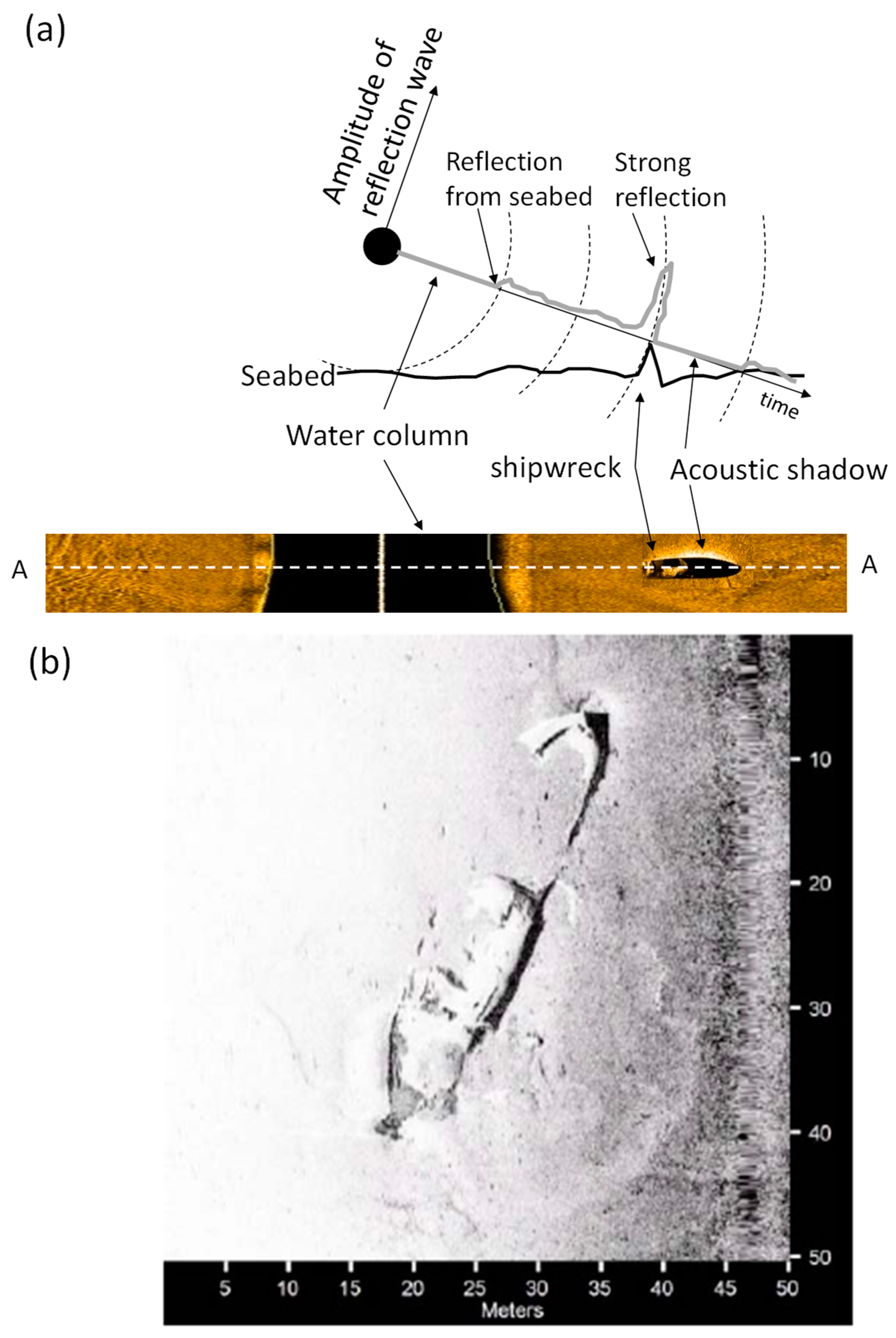
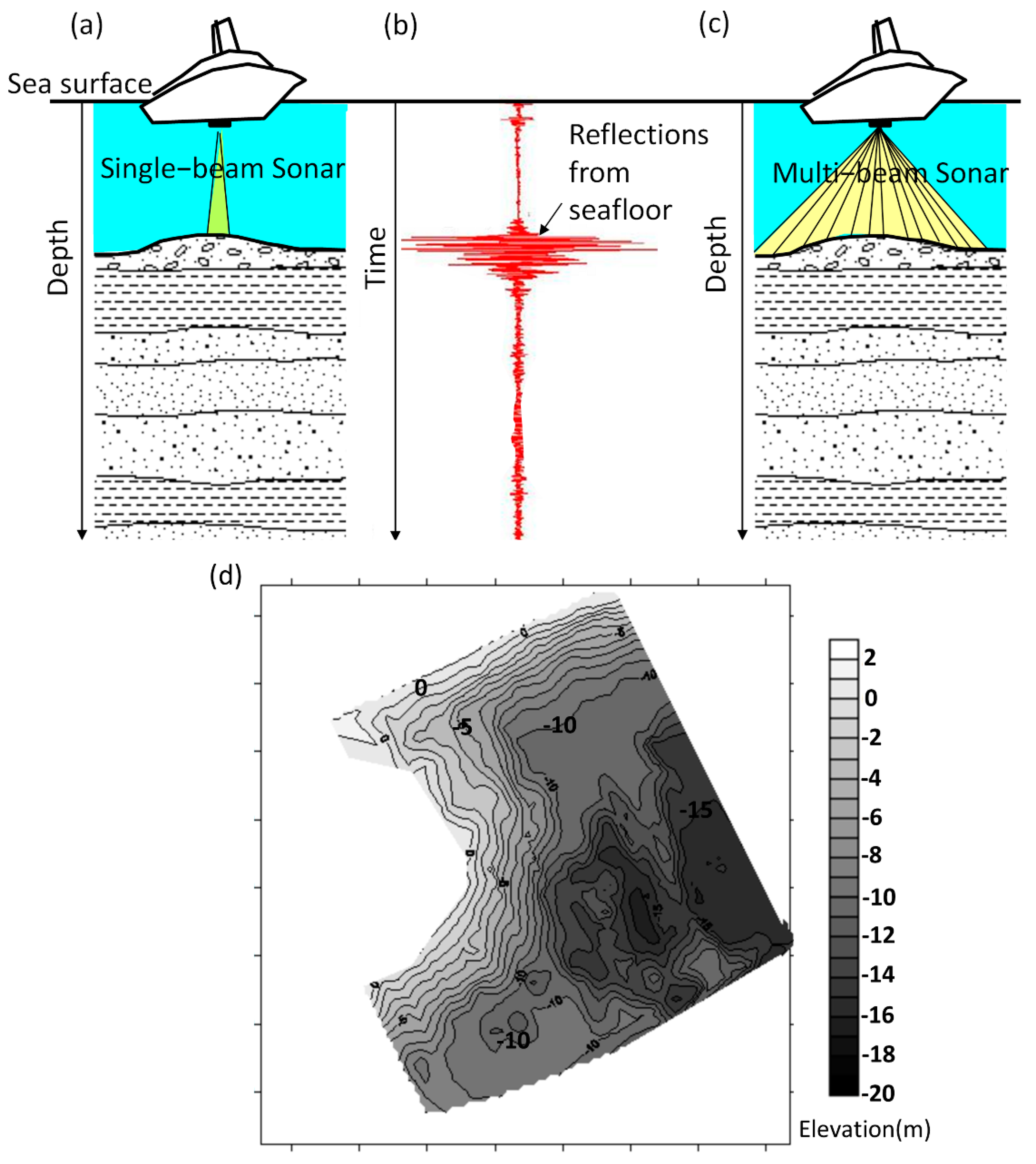
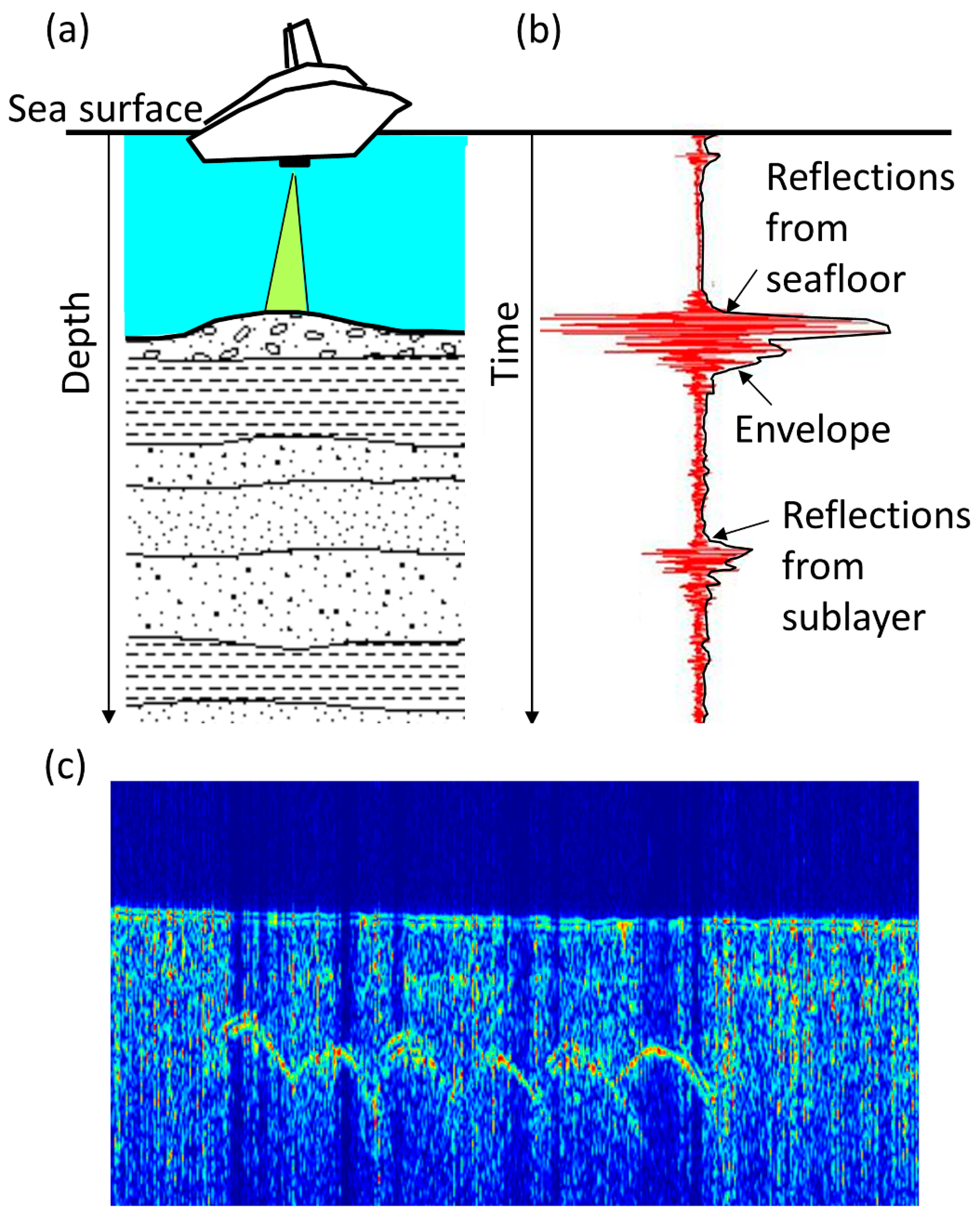

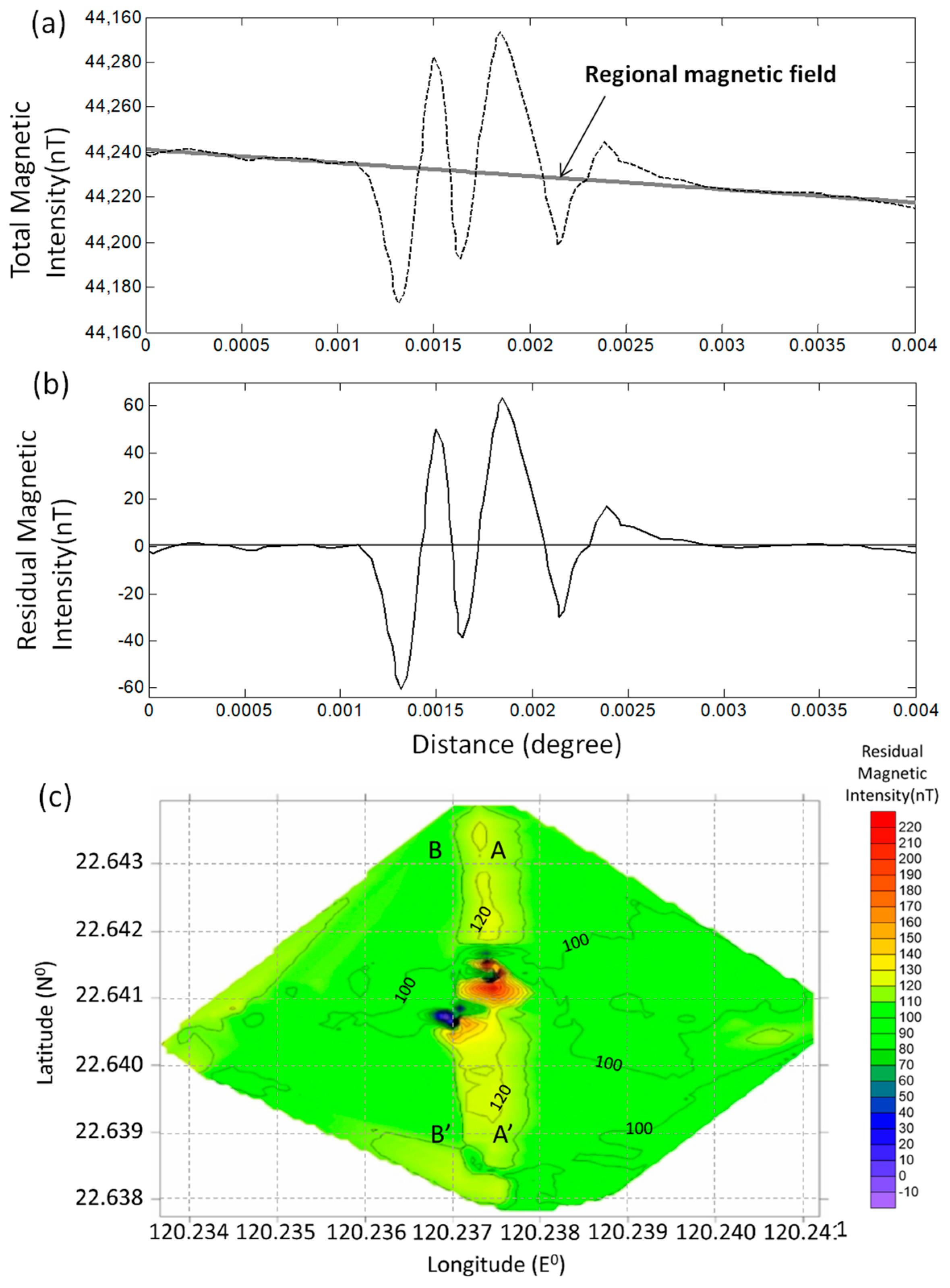


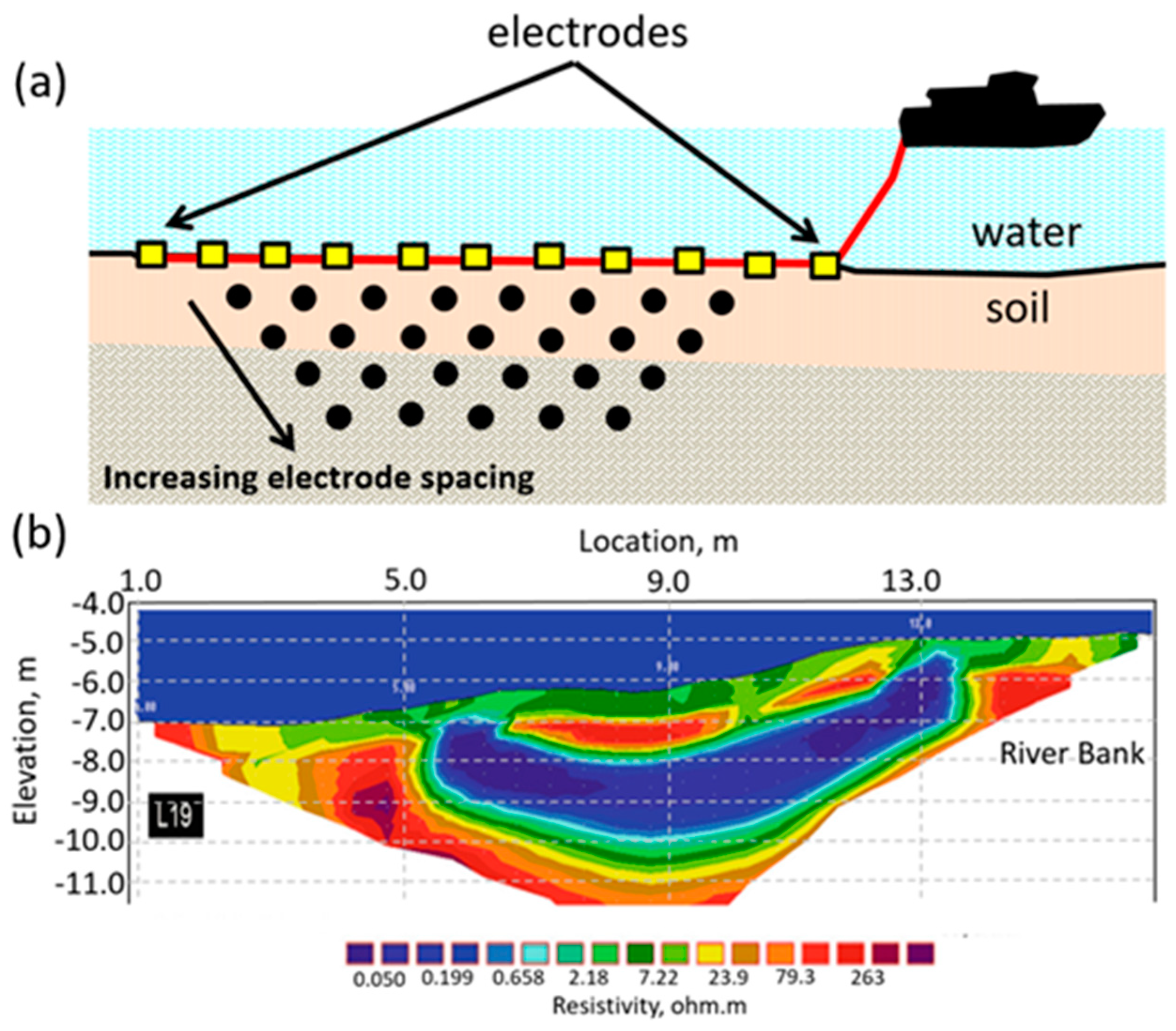
Publisher’s Note: MDPI stays neutral with regard to jurisdictional claims in published maps and institutional affiliations. |
© 2022 by the authors. Licensee MDPI, Basel, Switzerland. This article is an open access article distributed under the terms and conditions of the Creative Commons Attribution (CC BY) license (https://creativecommons.org/licenses/by/4.0/).
Share and Cite
Tsai, C.-C.; Lin, C.-H. Review and Future Perspective of Geophysical Methods Applied in Nearshore Site Characterization. J. Mar. Sci. Eng. 2022, 10, 344. https://doi.org/10.3390/jmse10030344
Tsai C-C, Lin C-H. Review and Future Perspective of Geophysical Methods Applied in Nearshore Site Characterization. Journal of Marine Science and Engineering. 2022; 10(3):344. https://doi.org/10.3390/jmse10030344
Chicago/Turabian StyleTsai, Chia-Cheng, and Chun-Hung Lin. 2022. "Review and Future Perspective of Geophysical Methods Applied in Nearshore Site Characterization" Journal of Marine Science and Engineering 10, no. 3: 344. https://doi.org/10.3390/jmse10030344





